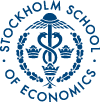No 121: Recreational Benefits from Improved Water Quality: A Random Utility Model of Swedish Seaside Recreation
Mikael Sandström ()
Additional contact information
Mikael Sandström: Department of Economics, Postal: Stockholm School of Economics, Box 6501, 113 83 Stockholm, Sweden
Abstract: In this paper, a random utility maximization (RUM) model of Swedish seaside recreation is used to estimate the benefits from reduced eutrophication of the seas around Sweden. Sight depth data from around the Swedish coast are used as a quality index related to eutrophication. The model is estimated using the nested multinomial logit (NMNL) and conditional logit (CL) specifications. In order to test the relationship between this quality variable and the nutrient concentration in the water, a regression of sight depth on the concentration of phosphorus and nitrogen has been run. The results are used to make policy simulations. Two sets of such simulations have been undertaken. One set assumes a uniform change of the nutrient load along the entire Swedish coastline. The consumer surplus from a reduction of the nutrient load by 50 percent is estimated to be around 140 mSEK if the NMNL model is used, and 540 mSEK if the CL model is used. The other set of policy simulations assumes a change in the nutrient load in the Laholm Bay in south-west Sweden. The consumer surplus for a 50 percent reduction in the nutrient load in the bay is estimated to be 12 mSEK if the NMNL model is used, and 32 mSEK if the CL model is used.
Keywords: random utility; recreation; water; Baltic Sea; eutrophication; discrete choice
50 pages, September 1996
Full text files
hastef0121.ps PostScript file
hastef0121.ps.zip PostScript file
hastef0121.pdf
hastef0121.pdf.zip
Questions (including download problems) about the papers in this series should be directed to Helena Lundin ()
Report other problems with accessing this service to Sune Karlsson ().
RePEc:hhs:hastef:0121This page generated on 2024-09-13 22:15:04.

